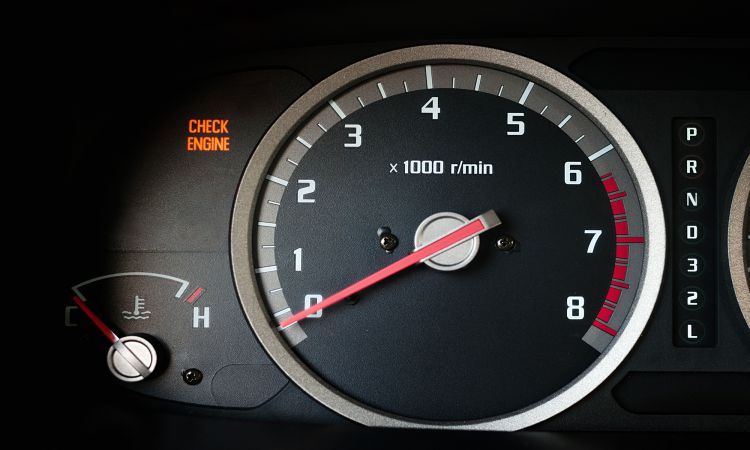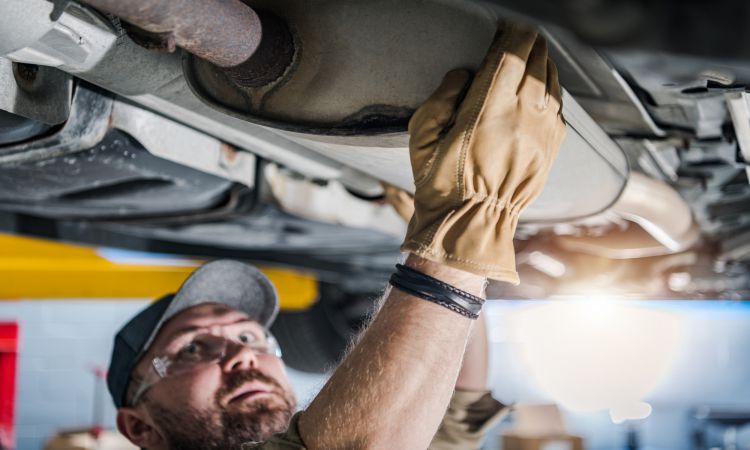 For many car owners, witnessing the check engine light illuminate is a cause for concern. Although some tend to panic, it doesn’t necessarily mean you’ll bring your vehicle for servicing, but it’s something you shouldn’t ignore. Once your vehicle’s internal computer pinpoints a potential issue with the transmission or engine, expect the check engine light to turn on.
For many car owners, witnessing the check engine light illuminate is a cause for concern. Although some tend to panic, it doesn’t necessarily mean you’ll bring your vehicle for servicing, but it’s something you shouldn’t ignore. Once your vehicle’s internal computer pinpoints a potential issue with the transmission or engine, expect the check engine light to turn on.
There are several reasons for the check engine light to flag an issue. It can range from a minor one, such as a loose gas cap, or a serious problem, such as a faulty catalytic converter. In some cases, it may indicate an internal engine failure. Overlooking the check engine light can potentially turn into a time-consuming and expensive repair job.
1. Failure Of The Catalytic Converter
One common reason your check engine light is on is because of a catalytic converter failure. It’s crucial to know the role of your catalytic converter, especially if you want to cut down on your vehicle’s emissions. Almost every late-model vehicle running on gasoline has a catalytic converter. The catalytic converter is integrated into the exhaust system. Its main function is converting carbon monoxide—produced during combustion—into carbon dioxide.
If you want to prevent a catalytic converter failure from happening, routine maintenance is crucial, especially oil changes. Doing so ensures the catalytic converter of your vehicle stays in optimum shape. For car owners living in urban areas and driving short distances, driving on the highway now and then is best to prevent the catalytic converter from clogging up. Remember to stay vigilant for any unusual sounds or discolored emissions from your car’s exhaust.
Other car owners use salvaged car parts to resolve this issue. Some may even find a functional exhaust system with it. If you’re eager to try this approach, consult a professional to look into the system and make sure the catalytic converter is still functional.
2. Oxygen Sensor Failure
The oxygen sensor or O2 sensor is responsible for measuring the amount of unburnt oxygen in your vehicle’s exhaust system. It transmits data to the vehicle’s computer, which it utilizes to regulate the mixture of air and fuel entering the cylinders.
The engine continues to function even if the O2 sensor requires a replacement, but it’ll burn more fuel than normal. Over time, a malfunctioning O2 sensor can damage components such as spark plugs and the catalytic converter. If you have an upcoming emissions test, hold back until you can have your O2 sensor checked out.
3. Loose Fuel Cap
The check engine light also turns on if the fuel cap is loose. It’s important to remember that the cap plays a crucial role in the fuel delivery system of your vehicle. It helps prevent the gasoline fumes from moving out of the fuel tank while ensuring the entire system maintains the proper pressure.
 Once the check engine light illuminates after filling up with gas, pull over and double-check if the cap isn’t loose or still attached to your car. In some cases, the cap might require a replacement. You can find universal caps at an affordable price range if you check automobile stores.
Once the check engine light illuminates after filling up with gas, pull over and double-check if the cap isn’t loose or still attached to your car. In some cases, the cap might require a replacement. You can find universal caps at an affordable price range if you check automobile stores.
4. Malfunction Of The Mass Airflow Sensor
The mass airflow (MAF) sensor is responsible for monitoring the amount of air entering your vehicle’s engine. It’s an essential component of your vehicle since it’s part of the engine-management system. If it starts to become faulty, your car might not be able to adjust to alterations in altitude. The MAF is prone to the buildup of dirt and oil, which is why cleaning may help. Unfortunately, if cleaning isn’t enough, it requires a replacement.
There are several indications to watch out for if you suspect a malfunctioning mass airflow sensor, such as difficulty starting, bumpy idle, and abrupt change in the positioning of the throttle pedal. Furthermore, you’re also likely to experience diminished gas mileage and stalling.
5. Faulty Spark Plugs Or Ignition Coils
When starting your vehicle, the ignition coil produces electricity that the spark plugs need to ignite the fuel and air blend within the cylinders. If you own a classic car, it only has a single coil, while the modern models have a coil pack. However, expect the check engine light to turn on once the coil malfunctions.
If the spark plug is the issue, you can readily replace it with a new one at an affordable price. You can replace your vehicle’s old spark plugs if you’re handy.
Final Thoughts
In every vehicle, the check engine light plays an important role. It serves as a warning that something may be wrong with your car. If you don’t want to be caught by surprise once you see the check engine light illuminating, following a regular maintenance schedule or servicing your vehicle would be the best move you’ll make. Doing so ensures your vehicle stays in optimum shape at all times.




